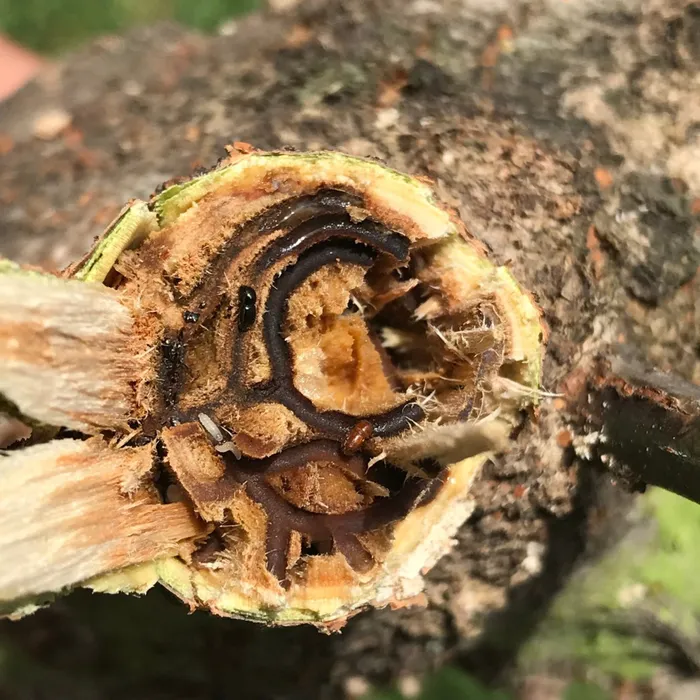Cape Town's fight against invasive tree-killing beetle

The City of Cape Town can confirm that the invasive polyphagous shot hole Borer beetle (PSHB) has been sighted in Somerset West. Picture: City of Cape Town/Twitter
Cape Town - It is a race against time as experts previously predicated the economic impact of the polyphagous shot hole borer in South Africa amounts to a whopping R275 billion over the next few years - and the City of Cape Town has hosted an online webinar to educate residents as close to 1000 trees around the Western Cape are infested.
Between June 2023 and June 2024, 938 trees were infected and removed from properties owned by the City.
The City said the PSHB poses a serious threat to Cape Town’s urban forest, as infested trees have to be chopped.
They added infested trees have been recorded in Alphen, Constantia, Penhill, Newlands, Rondebosch, Mowbray, Claremont, Kenilworth, and Observatory along the Liesbeek River, as well as in the Helderberg area.
This week the City continued its education and informative sessions on how to recognise the borer beetle and what to do.
They explained the trees affected include Boxelders, London Planes, English Oaks, Beef Wood, Weeping Willow, Cape Chestnut, Black Locust, Paperbark and Maples.
Deputy Mayor and Mayoral Committee Member for Spatial Planning and Environment, Eddie Andrews said education was vital.
“The PSHB beetle can easily spread across suburbs if extra precaution is not taken,” he said.
“The intention is to educate the public on how to identify infested trees, manage and transport beetle infested biomass to prevent the spread of the pest as far as possible.
“Importantly, the use of pesticides and fungicides have not proven effective at eradicating PSHB from infected trees.
“We need the support and collaboration of residents and businesses working with plant material.”
Andrews said a few months ago, a Boxelder tree infested with PSHB was discovered in Alphen, Constantia, which was of great concern to the City.
“We are therefore also asking that residents also assist by reporting any Boxelder trees as they come across them, which will help the team assess the extent of possible infestation in certain areas,” he said.
The City told Weekend Argus they would provide an overview of the outcome of the webinar.
In 2022, researchers advised the potential economic impact of the polyphagous shot hole borer in South Africa amounts to a whopping R275 billion over the next ten years.
They said municipalities would have to bear the brunt of this cost if nothing is done to stem the tide.
This estimate was the result of a collaboration between economists at the Stellenbosch University (SU), School for Public Leadership and ecologists at the DSI-NRF Centre of Excellence for Invasion Biology (CIB) at SU, SU’s Department of Conservation Ecology and Entomology and the Forestry and Agricultural Biotechnology Institute at the University of Pretoria.
SU explained the first detection was in South Africa in 2012, and that it has since spread to eight of South Africa’s nine provinces, making it the largest current outbreak of this invasive pest globally.
According to Professor Francois Roets, an ecologist in SU’s Department of Conservation Ecology and Entomology projections two years ago, a tree-rich town like Stellenbosch stands to lose 20 000 of the big old oaks and plane trees lining its streets.
He said in Somerset West, where the shot hole borer was first detected some years ago, more than 10 000 trees have already been infected and some of the oak trees are now dying.
He stated that urban trees are more susceptible to succumb to the beetle’s effects as these trees are usually already under stress in an urban environment compared to those in a natural forest rich with biodiversity.
The (PSHB) beetle is an invasive species which has been infesting trees in Cape Town since 2019.
They are often identified as being branch dieback which is cracks on the branch; discoloured leaves; dry and leafless branches; branch break-off revealing webs of galleries filled with black fungus or Gumming which is blobs of goo coming out of the bark; oozing of liquid and gum from the beetle holes.
Artist's unique tree house available to rent in Gordon's Bay for R5000
Forest giant in bid to save endangered trees
Related Topics: